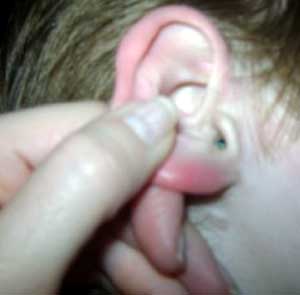According to the American Academy of Pediatrics, three-fourths of babies will get at least one ear infection before the age of one.
“If your baby gets three ear infections in six months or four in one year, it may be time to consider ear tubes,” says Andrew Hotaling, pediatric otolaryngologist at Loyola University Health System. “It is unusual for chronic earaches to lead to temporary hearing loss or even deafness but other health maladies can occur.” Otolaryngology is the study of the ear, nose and throat (ENT).
It is also important to be aware of the frequency and severity of ear infections to prevent speech delay.
“Hearing disorders can lead to impediments in speech development and other growth milestones,” says Dr. Hotaling. “The ear infections are usually located in the middle ear.”
Dr. Hotaling offers these indications that your little one may have ear problems:
Fever
Irritability
Poor sleep
Pulling or tugging at ears
“Teething pain can also hit trigger points in the ears, causing confusion as to the health problem,” says Dr. Hotaling, a professor at Loyola University Chicago Stritch School of Medicine. “Excessive drooling, swollen gums and excessive mouthing of objects can indicate a new tooth is coming in.”
Pediatricians are usually the first medical practitioners to look at ears for inflammation, middle ear fluid or if the ear-drum doesn’t move well. Causes for ear infections include several different types of bacteria and viruses. “Certain areas in the US, including the Chicago area where Loyola is located, are seeing an outbreak of pediatric respiratory syncytial virus (RSV),” says Dr. Hotaling who has practiced for more than 30 years. “While RSV causes cold-like symptoms, it does not result in ear infections.”
He recommends ear infections be treated with antibiotics in very young children.
“Antibiotics should only be prescribed if the ear infection cannot be cleared without them,” he says. “Incorrectly administering antibiotics can cause further harm.” Dr. Hotaling prefers not to prescribe antibiotics to older children to avoid building up a potential overexposure which can result in unresponsiveness as a medication over time.
Anti-inflammatory pediatric versions of acetaminophen and ibuprofen can be administered at home to provide relief. Applied heat to the outer ear, using a warm, not hot, wash cloth compress or brief use of a warm, not hot, heating pad or water bottle, can also provide comfort.
“When a baby or child has chronic ear infections that do not go away, putting in tubes is usually an appropriate treatment,” says Dr. Hotaling. “It is a common outpatient procedure, requiring anesthesia, and takes less than 15 minutes. The child goes home in less than an hour.”

















Related Items
Challenges faced by antibiotics developing companies
Carbon removal using 'blue carbon' habitats is 'uncertain and unreliable'
Top seven tips for parents of children with asthma